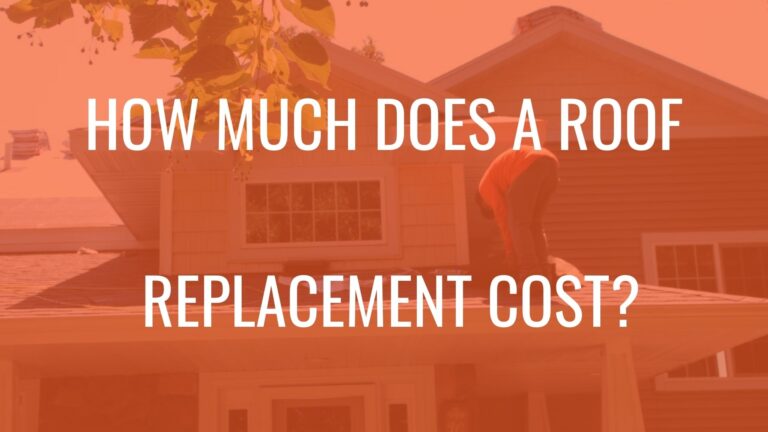The Ultimate Guide to the Roof Insurance Claim Process
It is common knowledge that things tend to get overwhelming while dealing with insurance coverage for your cars, home, health, and more.
In times of roofing damage, the roofing insurance process may seem especially daunting if you never had to file a roofing insurance claim before.
In order to simplify the process, T-10 will supply you with a guide on how to file a claim with your insurance.
On this page
(Click for a shortcut)
1. Assess the damage
To begin, you should be well aware of the damages that your roof has endured before you move forward with anything else.
What causes roof damage
- Extreme winds
- Fallen debris
- Hail
- Heavy Rains

Commonly, issues are harder to spot and may require an inspection with a ladder rather the ground.
You may even want to consider calling a roofing contractor for a professional inspection. Most of them do it for free. ( ;
What damage may look like
- Shingles cracked, curled or dented
- Missing shingles
- Internal leaks
- Shingle granule build up in gutters
2. Document all the details
Once you have your damages assessed, your next move is to collect all the proper “evidence”. The documentation of damages could be the make or break with your insurance claim!
Create a very detailed report of everything damaged including interior issues.
FYI: A proper roofing expert would be sure to collect evidence while performing their roofing inspection. It would be wise to get a statement from said roofing contractors well.
Additionally, photos of your home/roof before the occurrence of the damage would be a great reference for your insurance company to observe the extent of the damages.

3. Review your homeowner's insurance policy
After you identified the proper issues with your roof, it is time to see if your insurance coverage will apply to what your roof has experienced.
Oftentimes the claims process is made lengthy by ill-informed homeowners and other issues. It is best to reduce this chance by becoming up to date with your policy.
There are two strategies to figure out what type of damage is covered by insurers.
1. You may call a representative from your insurance and ask about the policy under your name. Then, you may ask what types of roof damage is covered for your home
2. If insurance documents are familiar to you, you may check your copy of the policy to find the list of coverages for your house.
If you are unable to find a copy of your homeowner’s policy, you can also call your insurance agent in order to obtain one.
Typically covered by insurers
- Hail
- Lightning
- Damaging debris
- Extreme wind
Typical situations not covered by insurers
- Damage caused by the homeowner
- Lack of maintenance
- Floods (separate insurance)
- 20+ year old roofing systems
4. Contact your insurance company
In order to avoid wasted time, it is recommended that you give a call to your insurance company as soon as possible. When doing this, explain your situation and learn more about procedures relating to this issue.
Additionally, it is important that you understand what type of coverage you have. Here are the two types of coverages and the differences between them.

Replacement cost
This coverage typically has steeper deductibles and premiums. However, with these prices, homeowners are provided with full reimbursement in the case of an event that is covered. “Today’s value” of your home is what determines how much cash is paid out.
Actual Cash Value
This type of coverage takes into account a home’s depreciated value and subtracts that from the value of a roof replacement. To explain further, say you lose a 10-year-old roof, the actual cash value of a 10-year-old roof will be paid.

5. Get an inspection and estimate
This step includes reaching out to find a public adjuster and a roofing contractor that will provide an inspection. Believe it or not, it is rare that you will encounter a roofing company without free inspections.
You will want to contact a public adjuster, contractor, and your insurance sooner rather than later since oftentimes there are limitations to the amount of time after an event a claim would be accepted.
Before you provide all your loyalty to a roofing company, it is important that you find a good pick. Ask around to see if your friends and family have any recommendations. Also look into company reviews and websites to help determine how professional they are.

6. File a roof claim
Now it is time to file the actual claim.
There is a form that should be provided by your insurance company that you will need to fill out. Because you should have all of your evidence collected and information from a roofer, it is important to include every detail that you possibly can.
7. Meet with an insurance adjuster
Step seven can be one of the most bothersome stages as it is time to have an insurance adjuster out to assess the property.
With this in mind, a homeowner IS allowed to have some back up present. You may ask your roofing expert to be there during the meeting in order to mitigate any issues and advocate for the homeowner. Remember, the homeowner and the roofer are on the same during this process.
This is the stage where there can be a little bit of back and forth between the insurance adjusters who may not want to “see” everything and the roofer that is trying to help you get the best coverage. Asking your roofer to attend may save some time in the process.
8. Claim approval: Schedule service
This is the time in which you get to celebrate your claim approval and schedule your repair.
It is important to note that scheduling a job may not always be as quick as one would hope. Insurance agents are often working through numerous claims at one time and the process may get delayed.
If the damage done to your roof will cause leakage or further damage, it is important to add a temporary solution to your home.

Conclusion
Filing for insurance claims can be a daunting, lengthy process, but it doesn’t have to be! With this step by step guide, you can get it done with ease.
We are not the insurance experts; however, we are roofing experts with lots of insurance experience. Call T-10 Construction for a FREE inspection and estimate!






